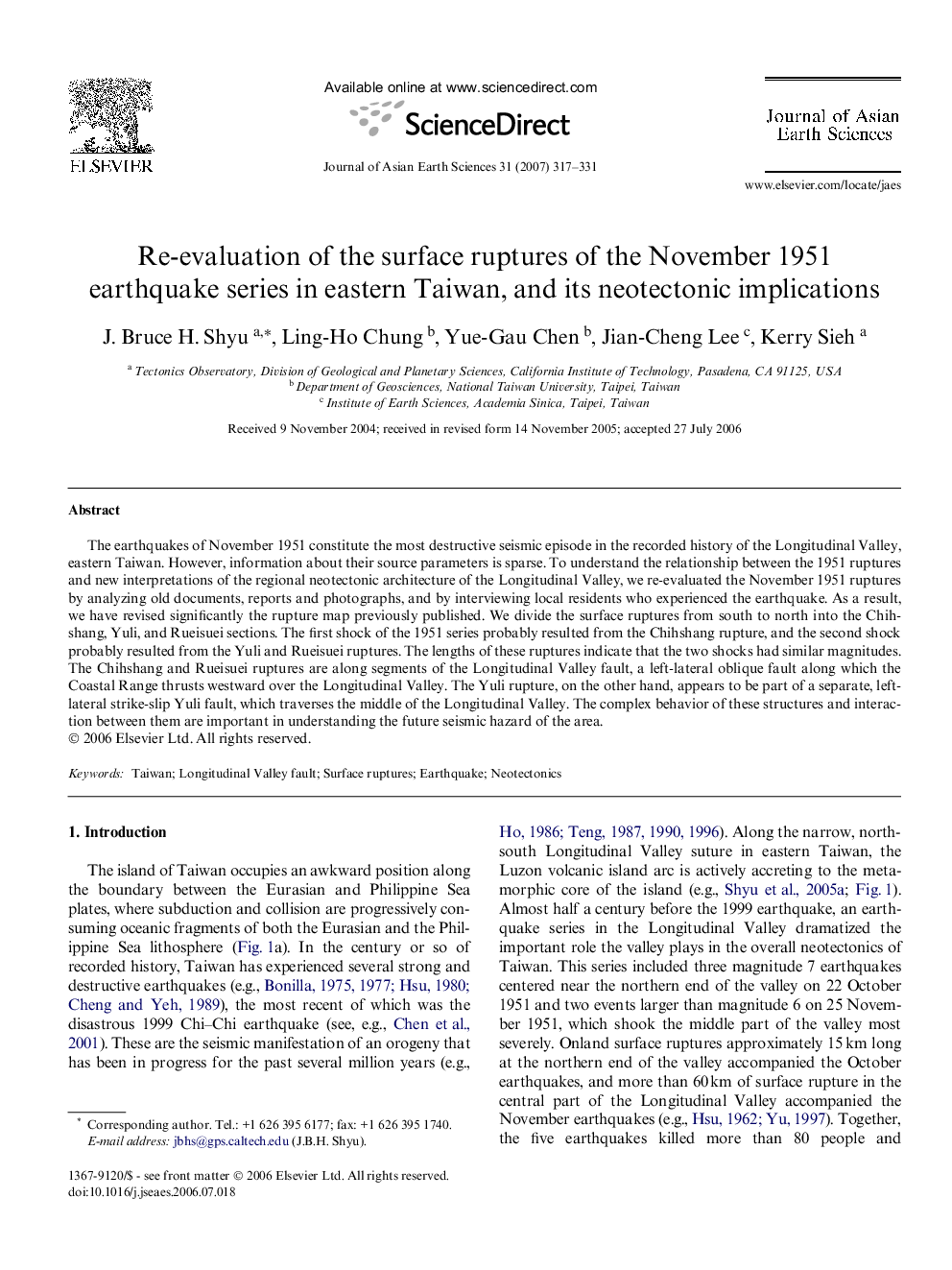| Article ID | Journal | Published Year | Pages | File Type |
|---|---|---|---|---|
| 4732733 | Journal of Asian Earth Sciences | 2007 | 15 Pages |
The earthquakes of November 1951 constitute the most destructive seismic episode in the recorded history of the Longitudinal Valley, eastern Taiwan. However, information about their source parameters is sparse. To understand the relationship between the 1951 ruptures and new interpretations of the regional neotectonic architecture of the Longitudinal Valley, we re-evaluated the November 1951 ruptures by analyzing old documents, reports and photographs, and by interviewing local residents who experienced the earthquake. As a result, we have revised significantly the rupture map previously published. We divide the surface ruptures from south to north into the Chihshang, Yuli, and Rueisuei sections. The first shock of the 1951 series probably resulted from the Chihshang rupture, and the second shock probably resulted from the Yuli and Rueisuei ruptures. The lengths of these ruptures indicate that the two shocks had similar magnitudes. The Chihshang and Rueisuei ruptures are along segments of the Longitudinal Valley fault, a left-lateral oblique fault along which the Coastal Range thrusts westward over the Longitudinal Valley. The Yuli rupture, on the other hand, appears to be part of a separate, left-lateral strike-slip Yuli fault, which traverses the middle of the Longitudinal Valley. The complex behavior of these structures and interaction between them are important in understanding the future seismic hazard of the area.
